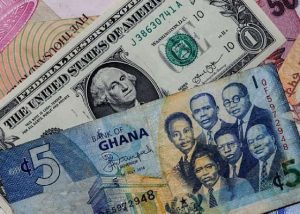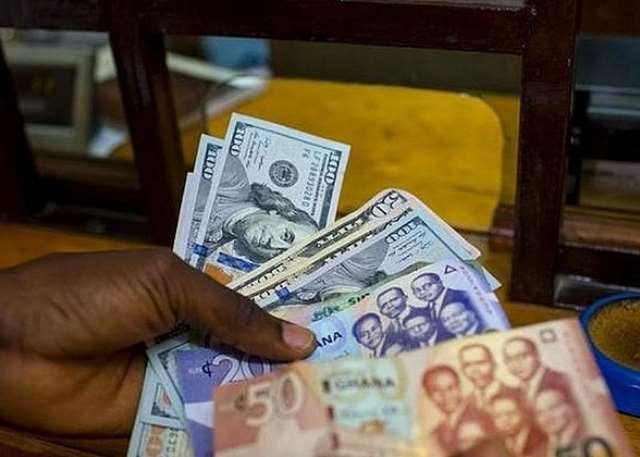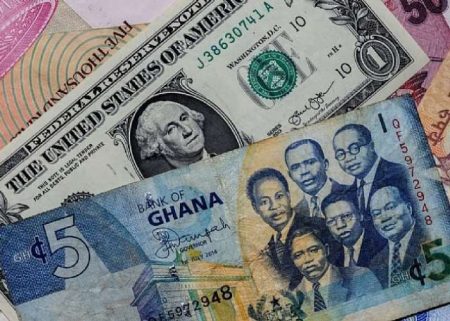The Ghanaian cedi experienced a slight fluctuation against major international currencies on Tuesday, February 11, 2025, with a mixed performance observed across various exchange platforms. Against the US dollar, the cedi maintained its buying rate at GHS15.29, indicating the price at which banks and forex bureaus purchase dollars from individuals. However, the selling rate, representing the price at which dollars are sold to individuals, dipped by 1 pesewa to GHS15.78. This marginal depreciation suggests a slightly increased cost for Ghanaians acquiring dollars for international transactions or investments. The data, sourced from Cedirates.com, a reliable platform for currency information in Ghana, reveals a consistent pattern of the selling rate being higher than the buying rate, reflecting the profit margin for currency exchange providers.
Forex bureaus, which provide an alternative avenue for currency exchange, offered slightly different rates compared to the commercial banks. Individuals seeking to exchange dollars for cedis could obtain GHS15.50 per dollar, while those converting cedis to dollars faced a rate of GHS15.90 per dollar. This difference between bank rates and forex bureau rates reflects the competitive landscape of the currency exchange market and provides individuals with options to compare and choose the most favorable rates based on their specific needs. The slightly higher selling rate at forex bureaus suggests higher profit margins for these smaller currency exchange entities compared to traditional banks.
On the interbank market, where banks trade currencies among themselves, the cedi exhibited relative stability against the US dollar. The buying rate stood at GHS15.47, while the selling rate was GHS15.49. This narrow spread between the buying and selling rates on the interbank market signifies a less volatile exchange rate environment among financial institutions. The interbank market plays a crucial role in determining the overall exchange rate dynamics and influences the rates offered by commercial banks and forex bureaus to individual customers.
Beyond the US dollar, the cedi’s performance against the British Pound and the Euro showcased further nuances. The average exchange rate for converting pounds to cedis was GHS18.88, while converting cedis to pounds cost GHS19.55. Similarly, the Euro traded at GHS15.69 for exchanging euros for cedis and GHS16.36 for converting cedis to euros. These figures highlight the influence of international currency fluctuations on the Ghanaian cedi and reflect the relative strengths and weaknesses of these major currencies in the global market. The Bank of Ghana’s interbank market rates for the Pound and Euro were GHS19.19 and GHS15.98, respectively, further illustrating the interplay between the interbank market and the rates offered to the public.
Money transfer operators, such as LemFi and Afriex, provided alternative channels for exchanging currencies, particularly for remittances from abroad. These platforms offered competitive rates for transferring funds from the US or the UK to Ghana. LemFi offered a rate of GHS15.33 per dollar, while Afriex provided a slightly higher rate of GHS15.39. For the British Pound, LemFi’s rate was GHS18.98, and Afriex offered GHS19.70. Euro transfers through Afriex were priced at GHS16.03, while LemFi offered a slightly lower rate of GHS15.80 per euro. These varying rates highlight the competition within the money transfer sector and provide individuals with options to optimize their remittance costs based on the prevailing market conditions.
Finally, for digital subscription payments using Visa and Mastercard, a fixed exchange rate of GHS16.59 per dollar was applied. This rate, often set by international payment processors, provides a standardized cost for online transactions, irrespective of the fluctuating market rates. This approach simplifies online payments for consumers but also means they may not always benefit from favorable exchange rate movements. Overall, the Ghanaian cedi’s performance against major international currencies on February 11, 2025, reflected a dynamic and interconnected exchange rate landscape influenced by various factors, including market forces, interbank trading, and the specific policies of financial institutions and money transfer operators. The availability of multiple exchange platforms offered consumers a range of choices to find the most advantageous rates for their individual currency exchange needs.














